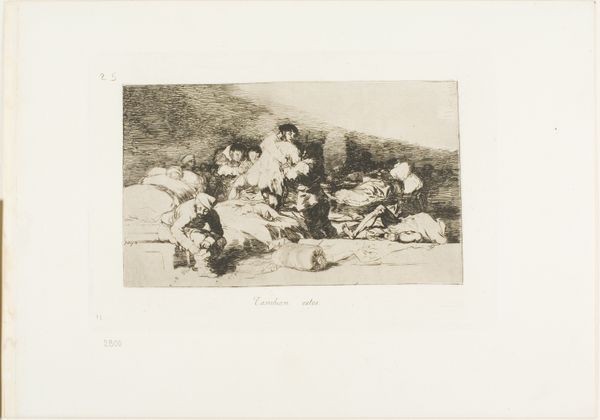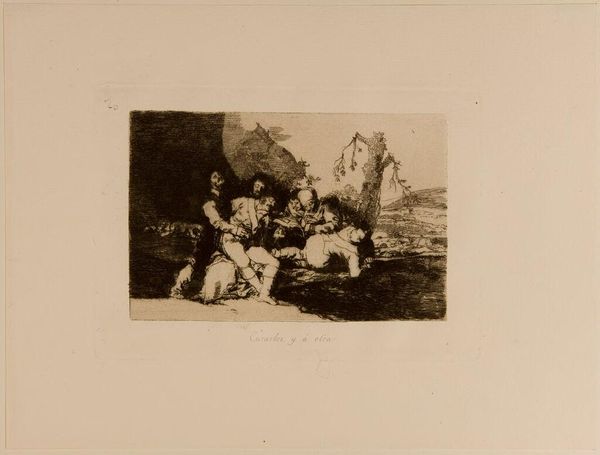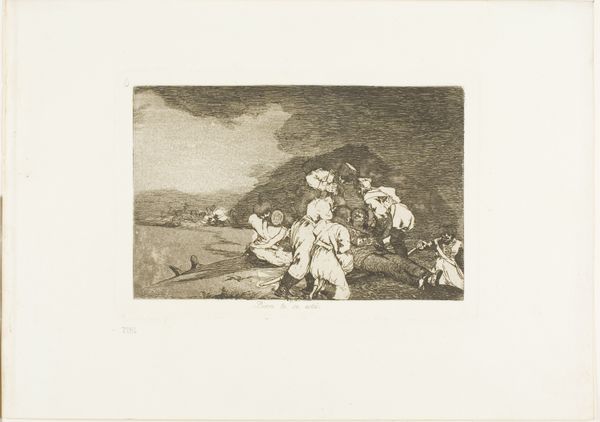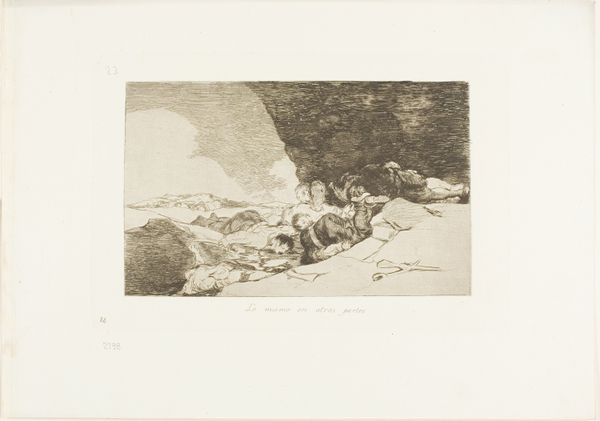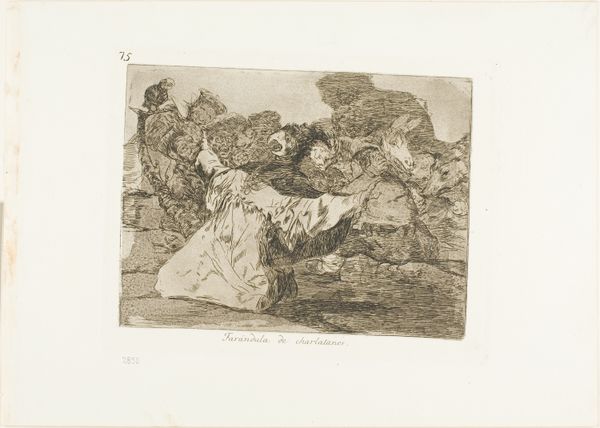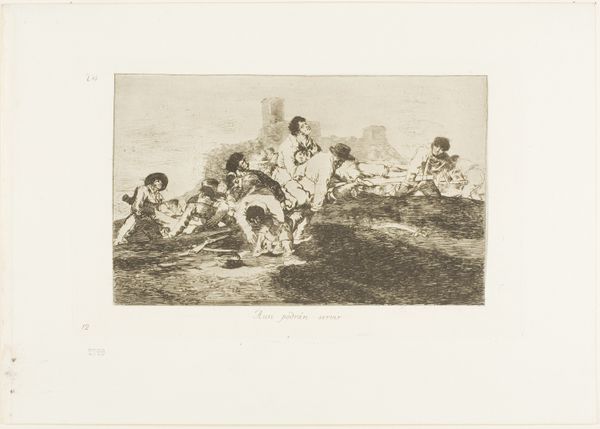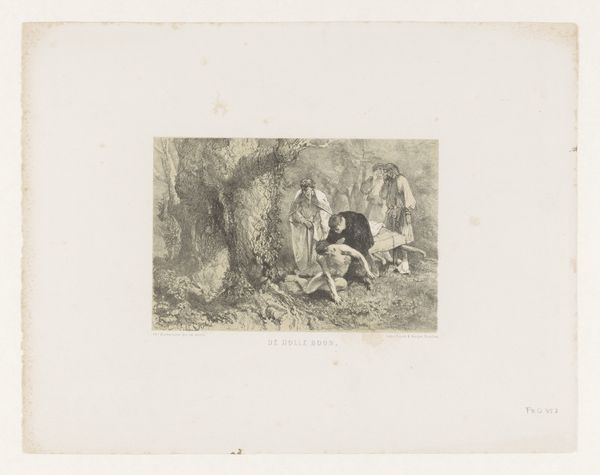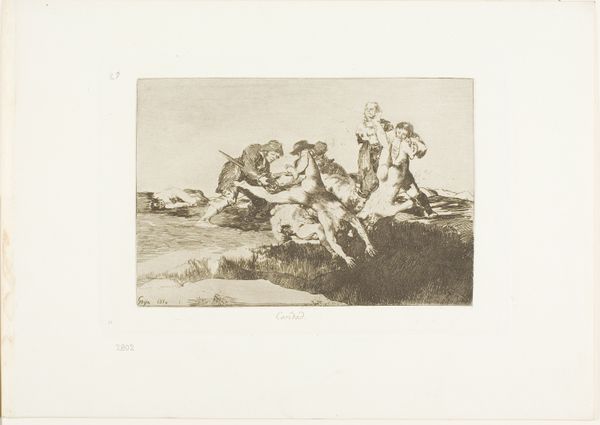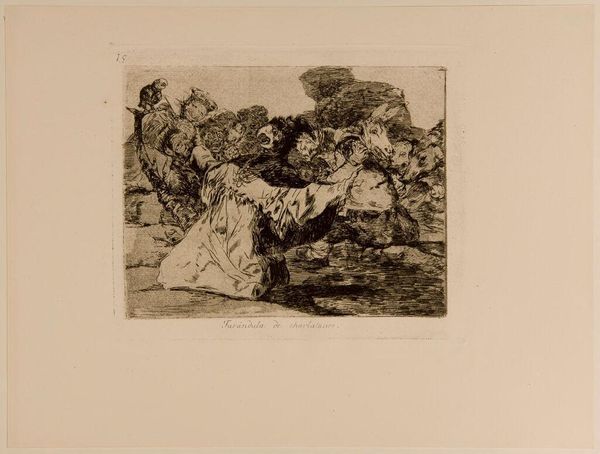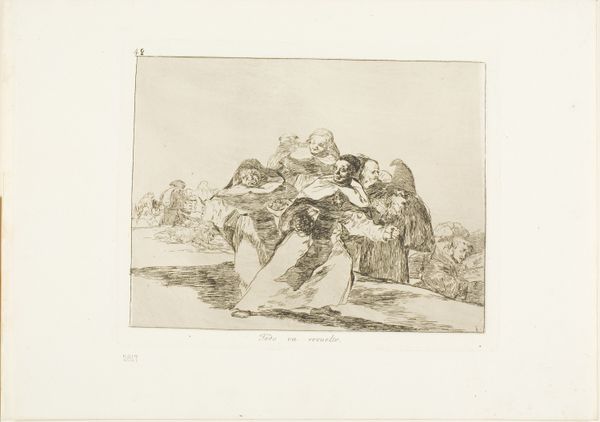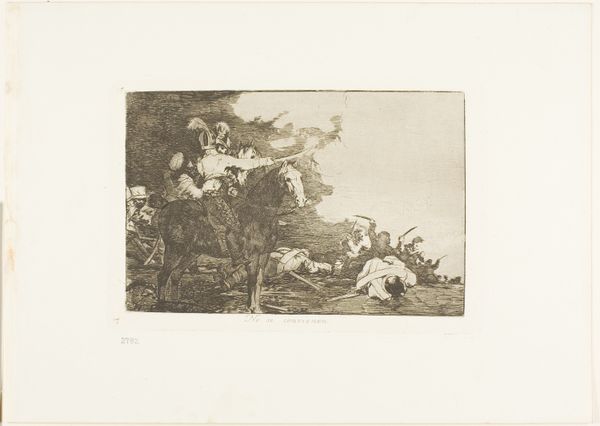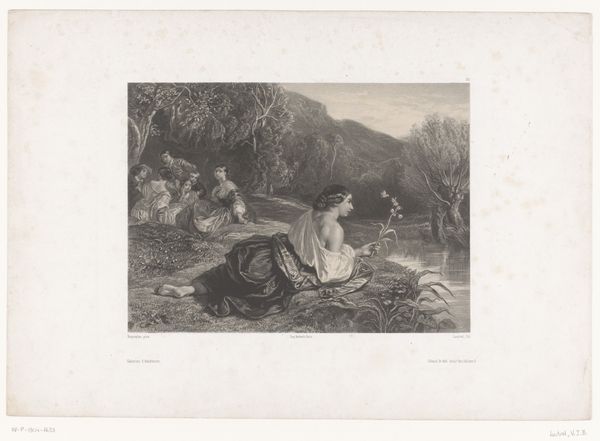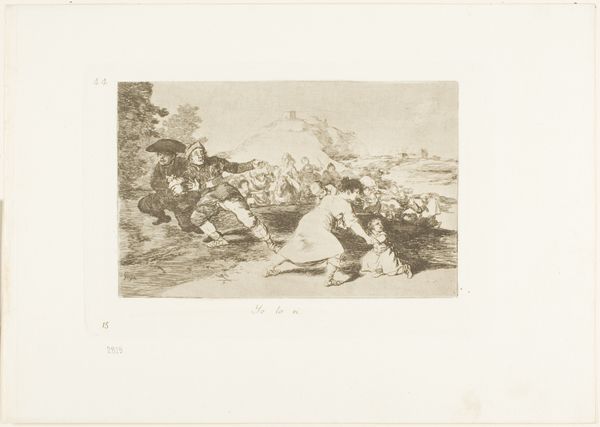
Get them well, and on to the next, plate 20 from The Disasters of War Possibly 1810 - 1863
0:00
0:00
drawing, print, etching, paper
#
drawing
#
narrative-art
# print
#
etching
#
war
#
figuration
#
paper
#
romanticism
#
history-painting
Dimensions: 123 × 193 mm (image); 160 × 235 mm (plate); 240 × 340 mm (sheet)
Copyright: Public Domain
Curator: This print by Francisco de Goya, part of his Disasters of War series, is titled "Get them well, and on to the next." It was likely created sometime between 1810 and 1863. Goya employed etching as his primary technique. Editor: There's an undeniable weariness in the scene, a kind of heavy quiet amidst what I imagine is ongoing chaos. The figures seem to huddle together as though seeking any warmth in a barren landscape. Curator: Absolutely. The aquatint etching process Goya used allowed for a remarkable tonal range. Notice how the darkness pools in the background, achieved through careful manipulation of the acid resist, almost like a storm gathering overhead. This contrasts sharply with the highlights on the bodies, emphasizing their vulnerability. The print medium itself is significant. It allowed for a wider distribution of Goya’s critique, a form of social commentary reaching beyond the elite circles of painting patronage. Editor: The bodies, especially the figure being lifted by the men at the left edge—his whiteness screams even within the print's subdued palette. It makes me wonder if his very posture indicates his level of recovery and possible further trauma to the next poor soul they tend to. Are these soldiers? Civilians? Curator: The ambiguity is part of the horror, I think. Goya isn't simply depicting heroic battles. The "disasters" encompass the suffering of all involved, irrespective of military rank or social standing. Consider how printmaking itself democratized imagery and questioned previous status positions that came with painting's traditions and royal favor. Etching became an instrument for truth, disseminated widely. Editor: It’s a disturbing intimacy too, witnessing these moments of desperate, almost futile, care. Makes me reflect on the material reality of care under duress, of human beings struggling with very little to alleviate immense suffering. There’s something so resonant, yet profoundly tragic about their actions. Curator: Indeed. Seeing how Goya worked, manipulating copper plates and acid baths to materialize his grim visions, makes it so tangible. This image, reproducible yet undeniably handcrafted, captures something essential about our own messy, materialized relationship with violence. Editor: Looking closer at these intertwined bodies really highlights how the act of caring for another, itself is an almost revolutionary action amid such ruin, I leave today reminded of the cost of it, both the obvious and the unspoken. Curator: Yes, an artifact that exposes the dark potential embedded within civilization itself, expertly captured in ink, paper, and mordant critique.
Comments
No comments
Be the first to comment and join the conversation on the ultimate creative platform.
